Community credited with state mineral designation
FRANKLIN. Letters that schoolchildren wrote to lawmakers got the bill over the goal line, former state Sen. Steve Oroho says.
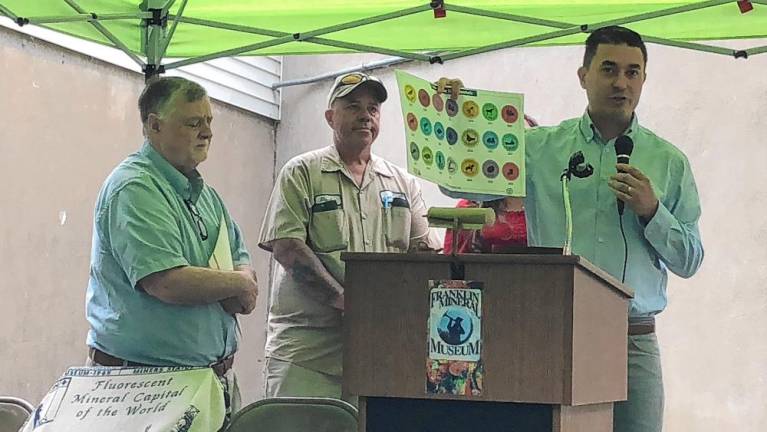
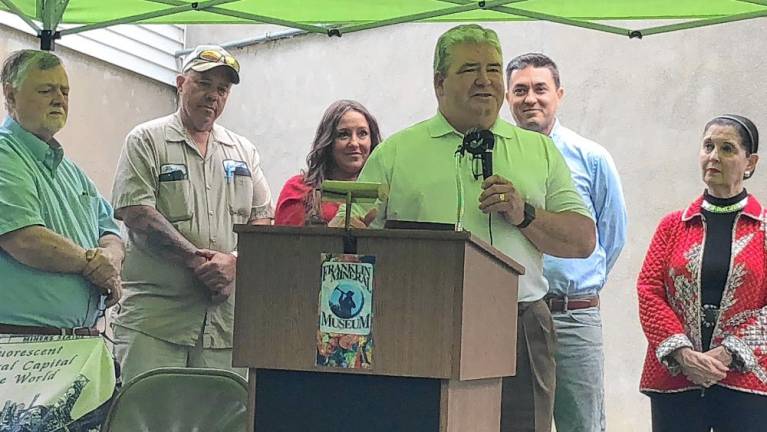
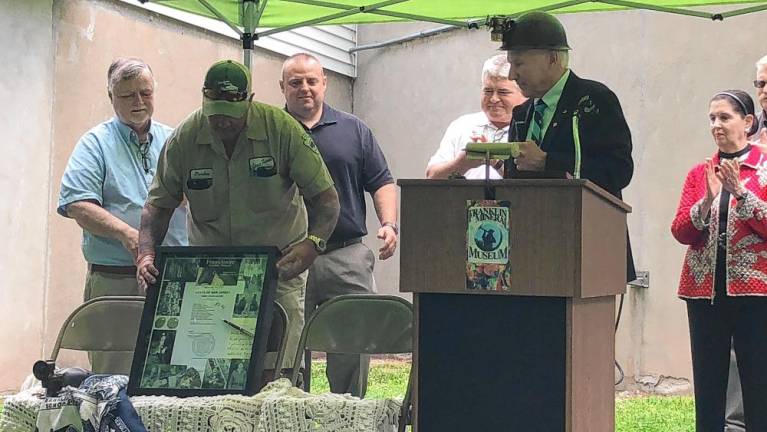
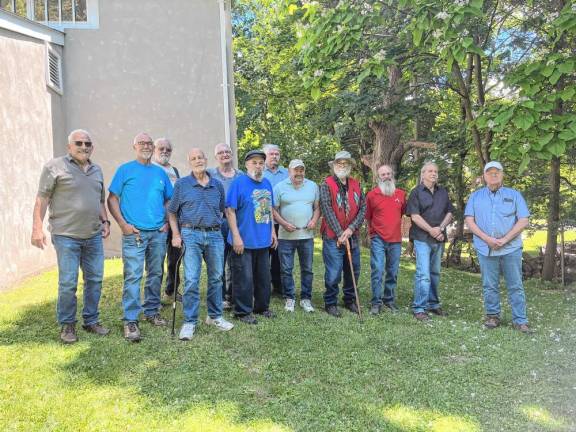
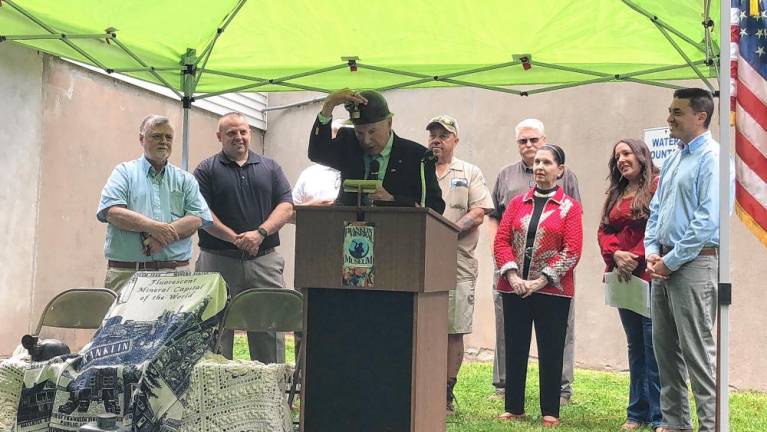
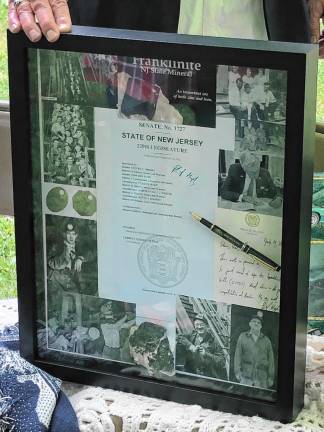
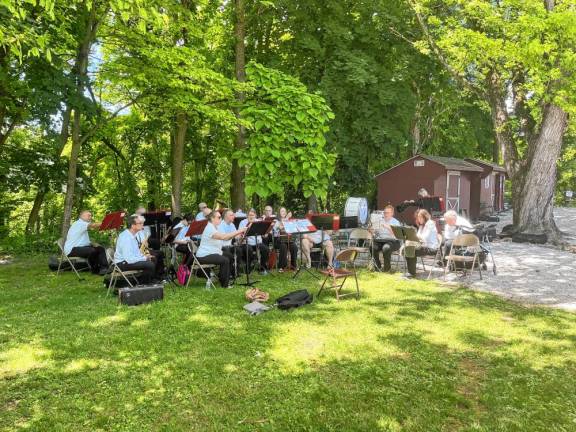
The community, especially local schoolchildren, deserve credit for winning passage of legislation making Franklinite the state mineral, officials said Sunday, June 9 at the Franklin Mineral Museum’s 48th Miners Day celebration.
Lawmakers tried to win approval of the proposal during several sessions of the state Legislature, said former state Sen. Steve Oroho of Franklin.
He noted the community’s role. “The community came and helped write the bill. The community came and educated us, the legislators ... , about how important it was to our community.
”Then when we finally got it through some of the committees, we had the community coming down to testify on what it meant for the state, what it meant for the country and how much history there was.
”And then, one of the final things that really made it so important was the Franklin School students writing letters, the Ogdensburg School students writing letters down to the governor ... to the legislative leadership to get this bill finished, and that’s what got it over the goal line.
”Perseverance, determination and a lot of our schoolchildren knowing the history of how much and what this meant.”
Franklinite’s new status was celebrated June 9 at the Miners Day celebration; men who worked in the mines are invited back each year.
Phil Crabb, a former Sussex County freeholder, pointed out that there would be nothing in the area without the miners. “You wouldn’t see the hospital if not for the ore that you pulled out of the mine. You wouldn’t see the school. You wouldn’t see all of the bungalow houses. You wouldn’t see the company store,
“You wouldn’t see four milling operations: this one right here to begin, Trotter and then to Parker Shaft for just a few years and then finally to the great Palmer Shaft.
”Without the ore that you brought out, they couldn’t have built those buildings. Without the ore that you brought out, they couldn’t have hired all the people that worked those buildings. Without the ore that you pulled out, they wouldn’t have built the Neighborhood House. They wouldn’t have been able to ship all this ore down to Palmerton, where they had another huge facility staffed by hundreds of people that was solely there from the ore that you pulled out.
“And the 22 million tons of ore, just ore, that were pulled out of the Franklin Mine ... paid for all that and provided a Fortune 50 company. That’s truly amazing.”
He told the miners: “This town exists because of the ore that you pulled out of the ground. This town still persists because of that. It’s amazing what you meant to this area.”
Help to business
Virginia “Ginny” Littell, widow of former state Sen. Bob Littell and mother of former Assemblywoman Alison Littell McHose, pointed out the importance of the mine and the tourists it attracts to local businesses.
When she and McHose owned an antiques store on Church Street in Franklin, “you would not believe how many people that came to visit this location would come to shop and eat and just enjoy our region.” “It certainly over the years has been wonderful for the business community.”
She also saluted those who worked in the mines, adding, “I couldn’t go underground if you put a gun to my head.” “It has certainly put us on the map.”
Franklin Mayor John M. Sowden IV recalled being a tour guide at the museum in the early 1960s and seeing on Miners Day how many people had worked in the mines.
”Now as I come here and look around, I see fewer and fewer of these people. And I say to myself, ‘Thank God the mineral museum is here and will continue to be here to keep this tradition going’ because let’s face it, we’re not going to live forever. And I don’t want us to ever forget what was done here.”
Bill Truran, the county historian, presented a framed copy of the legislation signed by the governor making Franklinite the state mineral. It will hang in the museum.
Truran, who grew up in Franklin, credited members of his family who worked in the mines. “I’ve grown up here and I’ve seen the hard work of the miners, lived with the fruits of their efforts, and gone through the school on the hilltop beneath the old oak tree that began over 100 years ago as a vocational-technical school for the mines and have had the good fortune to see progress happen.”
State Assemblyman Mike Inganamort held up a flier showing the symbols of New Jersey, which now include Franklinite. “Of all 21 state symbols ... , it is the only one where the name of the town is right there front and center: Franklinite, Franklin Borough, Sussex County, New Jersey. I think that’s pretty extraordinary.”
This town exists because of the ore that you pulled out of the ground. This town still persists because of that. It’s amazing what you meant to this area.”
- Phil Crabb, former Sussex County freeholder,
to former miners attending the annual Miners Day at the Franklin Mineral Museum